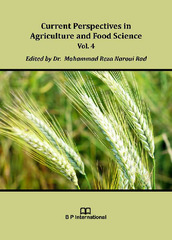Приказ основних података о документу
Nutritional value and fatty acid profile of dry sausages traditionally prepared in eastern Serbia
| dc.creator | Tasić, Aleksandra | |
| dc.creator | Pavlović, Ivan | |
| dc.date.accessioned | 2024-01-04T21:51:56Z | |
| dc.date.available | 2024-01-04T21:51:56Z | |
| dc.date.issued | 2023 | |
| dc.identifier.isbn | 978-81-19217-97-7 | |
| dc.identifier.isbn | 978-81-19217-98-4 (eBook) | |
| dc.identifier.uri | https://reponivs.nivs.rs/handle/123456789/846 | |
| dc.description.abstract | In this study, the main goal was to examine traditionally prepared home-made dry fermented sausages known as peglana sausages. The nutritional composition, moisture and profile of fatty acids were analyzed. The analysis dry fermented sausages were traditionally produced in eastern Serbia since the 19th century, and some believe much earlier. These sausages are produced in this way only in the town of Pirot, for which this town is famous, because peglana sausages are a well-known specialty when talking about the uniqueness and quality of food. The reason is the characteristic way of preparation, the special way of drying and their specific taste. The method of preparation involves the use of high-quality raw meat from autochthonous animals from the mountain of the Stara Planina estate, which is in the vicinity of Pirot. During the preparation, the microwave extraction method of fatty acids was used in parallel, and the results obtained were compared with the results obtained by conventional preparation. Sausages are characterized as products with low moisture content and high protein content. The amount of saturated, monounsaturated and polyunsaturated acids as the ration of the total fatty acids was 53.6%, 34.35% and 12.03% respectively. Fatty acids were determined in the form of methyl esters of fatty acids after extraction and esterification of fats based on calibration curves of 37 different acids and by measuring the ratio of peak area, standard peak area and internal standard area. The main essential fatty acids present in dry peglana sausage are palmitic acid, stearic acid and oleic acid. Using the mean values obtained for the composition of fatty acids, health indices were calculated and a low value of atherogenic index (AI) was obtained. Gas chromatography with flame ionization detection (GC/FID) was used to quantify the fatty acid profile. | sr |
| dc.language.iso | en | sr |
| dc.publisher | B P International | sr |
| dc.rights | openAccess | sr |
| dc.source | Current perspectives in agriculture and food science | sr |
| dc.subject | fatty acids | sr |
| dc.subject | nutritional composition | sr |
| dc.subject | sausages | sr |
| dc.subject | GC/FID | sr |
| dc.title | Nutritional value and fatty acid profile of dry sausages traditionally prepared in eastern Serbia | sr |
| dc.type | bookPart | sr |
| dc.rights.license | ARR | sr |
| dc.rights.holder | Authors | sr |
| dc.citation.epage | 155 | |
| dc.citation.spage | 143 | |
| dc.citation.volume | 4 | |
| dc.description.other | This chapter is an extended version of the article published by the same author(s) in the following journal. InIOP Conference Series: Earth and Environmental Science, 2019;333(1):012106. | sr |
| dc.identifier.doi | 10.9734/bpi/cpafs/v4/19704D | |
| dc.identifier.fulltext | http://reponivs.nivs.rs/bitstream/id/2239/CurrentPerspectivesinAgricultureandFoodScienceVol.4--ebook_2,3,5-8,153-165.pdf | |
| dc.type.version | publishedVersion | sr |

